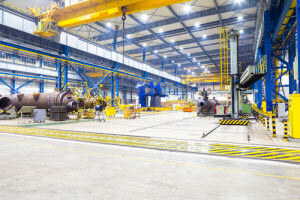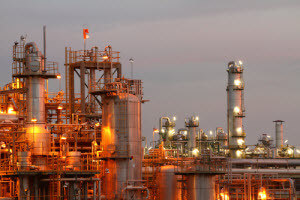How to Uncover the Hidden Operating Costs of Manufacturing Plants
When operating a manufacturing plant, it’s important to be aware of all of the costs that are associated with running it. There’s been a need for management to become aware of the hidden operating costs that are accruing and being overlooked, which causes a big impact on the bottom line.
 Uncovering otherwise overlooked data can help manufacturing plants understand certain costs or reasons that they’re being inefficient. Using tools to monitor what you’re spending money on and how much, as well as data reporting to collect and analyze this information, can help you uncover hidden costs. There are different methods to learn about these costs, and it’s important to find the one that’s right for your business.
Uncovering otherwise overlooked data can help manufacturing plants understand certain costs or reasons that they’re being inefficient. Using tools to monitor what you’re spending money on and how much, as well as data reporting to collect and analyze this information, can help you uncover hidden costs. There are different methods to learn about these costs, and it’s important to find the one that’s right for your business.
Learn more about how to get to the bottom of the hidden operating costs that your plant has been dealing with.
Audit Your Energy Use to Uncover Hidden Operating Costs
Incorporate an energy auditing program in your manufacturing plant to find out exactly how much electricity you’re using. Plants are becoming more energy efficient due to reducing emissions as well as to cutting down on their costs.
 Paul Twite of 24-7 Power, an electrical consulting and engineering service company, tells ReliablePlant about the three-step approach that helps companies lower their energy bills. These three steps are reviewing utility bills; using thermal imagers to scan the electrical, mechanical, process, and HVAC systems and building envelope; and monitoring power consumption and other aspects of energy use.
Paul Twite of 24-7 Power, an electrical consulting and engineering service company, tells ReliablePlant about the three-step approach that helps companies lower their energy bills. These three steps are reviewing utility bills; using thermal imagers to scan the electrical, mechanical, process, and HVAC systems and building envelope; and monitoring power consumption and other aspects of energy use.
Here’s a breakdown of each step:
- Reviewing utility bills: The main objective here is to find out where the energy you’re using is going. Utility meters aren’t always one hundred percent correct, and they can malfunction over time. Part of the energy auditing process is to double check the utility and make sure that it’s operating correctly and giving a proper read.
- Analysis and identifying problems: The data will be analyzed, which will then lead to determining if there are any issues with any of the systems. The auditor will also assess how efficient the lighting systems, HVAC systems, motors, and other plant equipment are.
- Proposing and prioritizing solutions: This step involves addressing problems that were uncovered in the previous two steps. You’ll need to develop solutions and determine action items in order to improve the problem.
Stay in the Loop with New Technology
New technologies are constantly being created in order for you to reduce the amount of energy that you use within your plants. Staying aware of these new advances can help you find opportunities to incorporate them in your own plant. Be on the lookout for solar-powered tools or energy-efficient lighting and determine where they could fit.
Manufacturing plants are spending more on electricity than they should be. The good news is that there are ways to determine if you’re spending more than you should be, and there are always plenty of ways to reduce these high energy costs.
If you’re interested in high-quality valves and fittings, click here to contact CPV Manufacturing.
